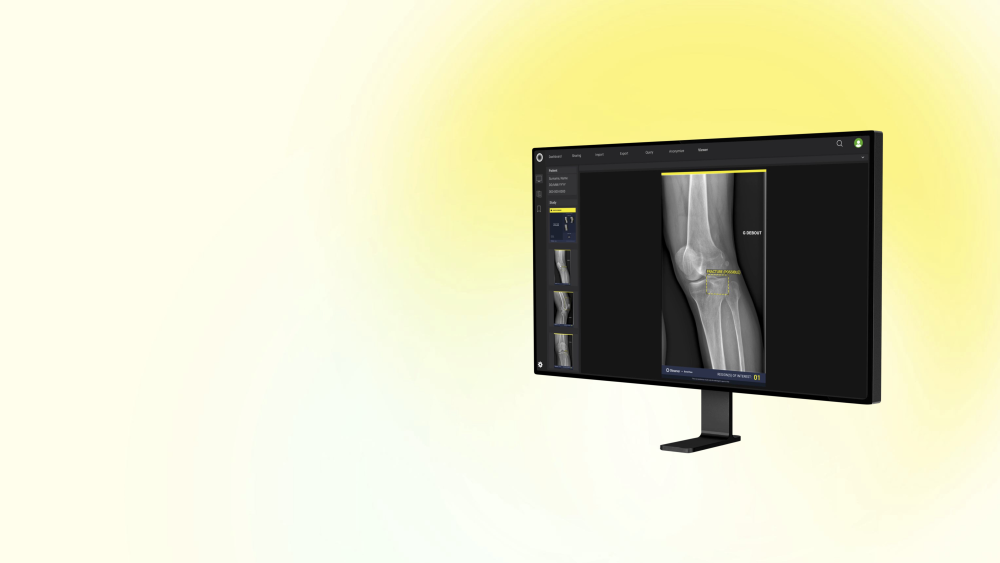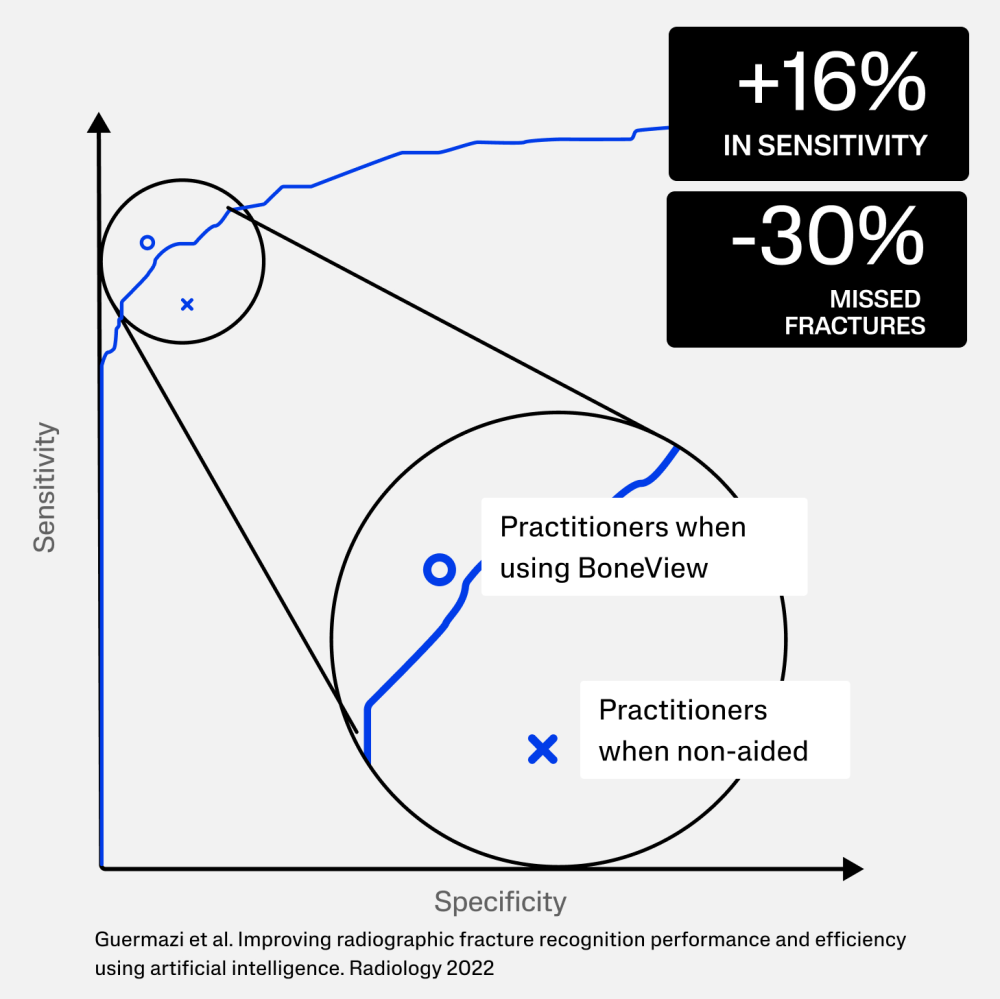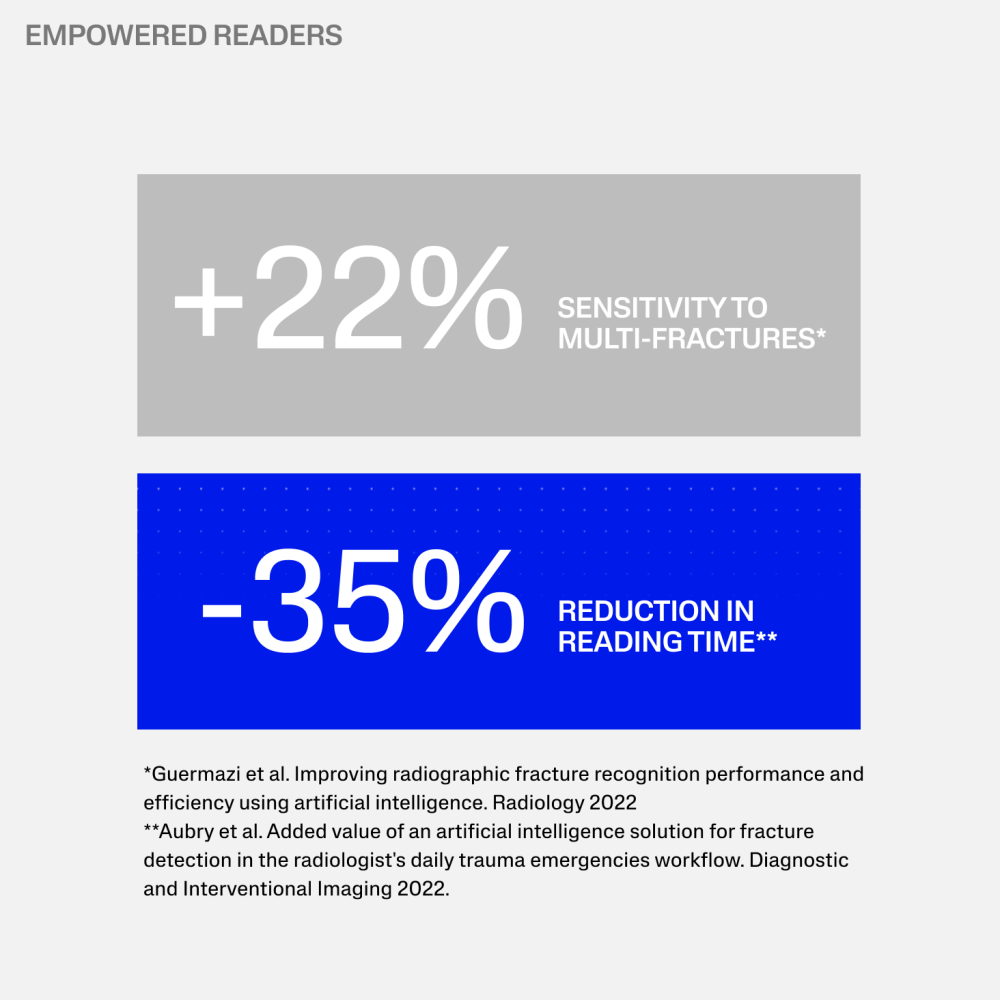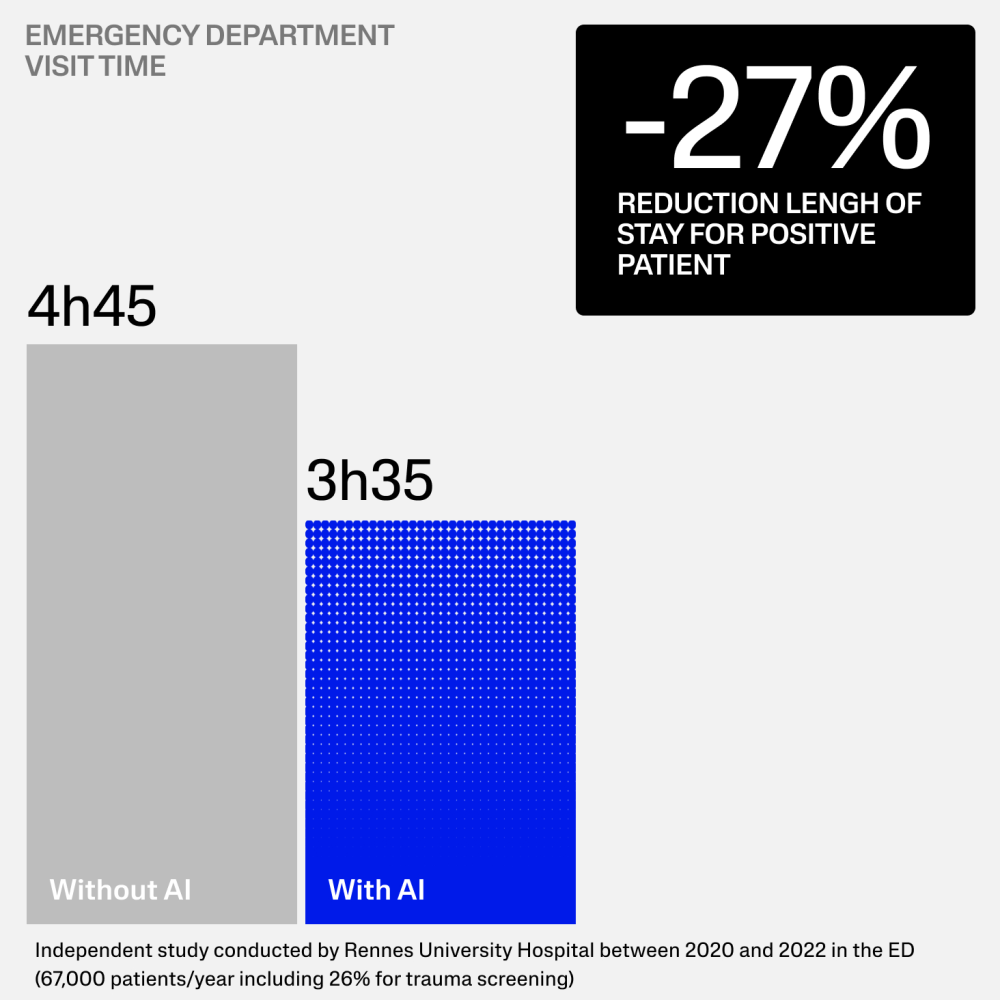“In a context in which the exam workload is getting higher, AI allows us to reduce human errors: perception, satisfaction of search, and side biases.”


GleamerBoneView
3 years old boy, complains after returning from the park. Non-contributory clinical examination at first.
Buckle fracture of the first metatarsal bone detected by BoneView.
34 years old male, pain after a boxing lesson.
Fracture of the hamatum seen by BoneView and confirmed by CT.
63 years old male, lingering pain after a trail run.
Fracture of the lateral tibial plateau associated with lipo-hemarthrosis confirmed with CT. This fracture has a high risk of displacement so it's important to detect it ASAP and requires a surgical opinion. Fractures that can cause arthrosis in the long term.
Reduce medical errors and enhance precision. BoneView boosts the diagnostic accuracy of all readers, from MSK specialists to ED physicians.

BoneView enables readers to achieve higher efficiency, regardless of the hour or day. It reduces reading time and minimizes errors stemming from fatigue or search biases.

By promptly identifying and preventing overlooked pathologies, the waiting time in emergency departments is decreased and patient recalls along with associated litigation costs can be reduced. BoneView optimizes patient care pathways.
